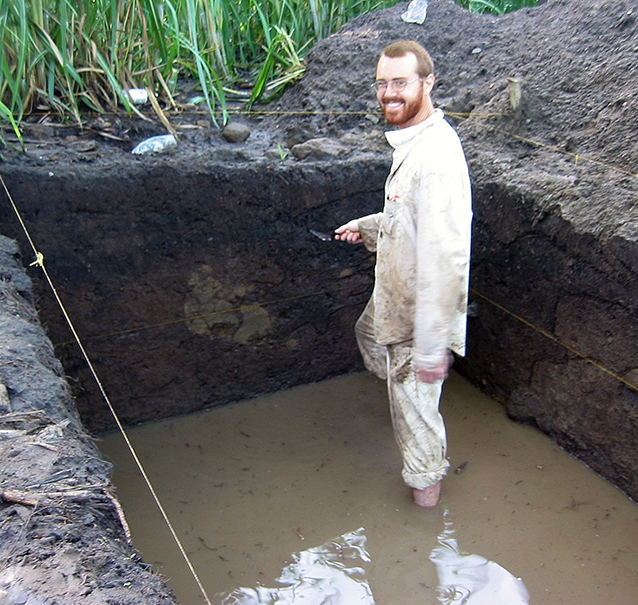NSF Awards $250,000 to Study Ancient Agriculture in South-Central Veracruz
The National Science Foundation awarded a little more than $250,000 over a four-year period to study ancient agriculture in south-central Veracruz, Mexico.
This region presents a complete cycle of development from intensification of agricultural infrastructure to its ultimate failure. As such, it’s an opportunity to learn about what combination of factors and stresses contributed to its undoing — and perhaps gain insights into modern farming and the potential impacts of climate change on this coastal region.
Wesley Stoner, associate professor of anthropology at the U of A, will serve as co-principal investigator with Amber VanDerwarker, a professor of anthropology at the University of California, Santa Barbara. Their work will focus on agricultural intensification and settlement trends in the Tlalixcoyan basin, which ultimately collapsed in 800 C.E. after centuries of cooperative success.
The anthropologists will target a 150-square-kilometer area of raised fields along the coastal plains of Veracruz that flourished between 200 and 800 C.E. Cooperative farming enabled the increased concentration of population and settlements that included large earth constructions of temples and ball courts.
Central to this population growth was the development of agriculture techniques that included creating a network of drainage canals through wetlands and relocating the fertile soil to raised planting platforms. This required cooperative relationships among farmers and government institutions that ultimately dissolved after six centuries. While the researchers have theories about why agricultural cooperation ceased, they hope to gain a more accurate picture of the area’s rise and fall.
Noting the general challenges facing farmers of any age, Stoner and VanDerwarker wrote, “The social and environmental conditions of agriculture continuously change due to climatic variability, erosion, soil fertility losses and the willingness of individual farmers to cooperate both with each other and government institutions. These uncertainties, which have plagued all agricultural societies since the earliest domesticates, cannot be easily predicted into the future, so we turn to the long-term approach of archaeology.”
The project will include student and faculty collaborators from both the United States and Mexico, as well as a multidisciplinary approach, including use of excavations and land surveys, botanical and chemical analysis, study of paleoenvironmental sediment cores and utilization of satellite and aerial remote sensing images.
Ultimately, Stoner and VanDerwarker hope to gain a clearer understanding of a complex array of intersecting elements, including soil fertility, crop selection, differences in household diets between more affluent and less affluent families, building techniques and timelines for construction of raised agriculture platforms, and the effects of climate change over time. By getting a comprehensive view of the social, political, religious and environmental factors that led to an unprecedented agricultural system, they hope to uncover the reasons why such successful collective action ceased.
Stoner, who has been doing research in Mexico for nearly 20 years, will spend the next three to four summers working on this project. Regarding his attraction to the region, Stoner said, “I’ve worked in this region for a long time. I love the Jarocho culture, food and music. I’ve made many good friends and colleagues there. While I have run projects in other regions of Mexico and North America, the Gulf coast of Veracruz keeps calling to me.”
About the University of Arkansas: As Arkansas' flagship institution, the U of A provides an internationally competitive education in more than 200 academic programs. Founded in 1871, the U of A contributes more than $2.2 billion to Arkansas’ economy through the teaching of new knowledge and skills, entrepreneurship and job development, discovery through research and creative activity while also providing training for professional disciplines. The Carnegie Foundation classifies the U of A among the top 3% of U.S. colleges and universities with the highest level of research activity. U.S. News & World Report ranks the U of A among the top public universities in the nation. See how the U of A works to build a better world at Arkansas Research News.
Contacts
Wesley D. Stoner, associate professor
Department of Anthropology
479-575-4816, wdstoner@uark.edu
Hardin Young, assistant director of research communications
University Relations
479-575-6850,
hyoung@uark.edu
